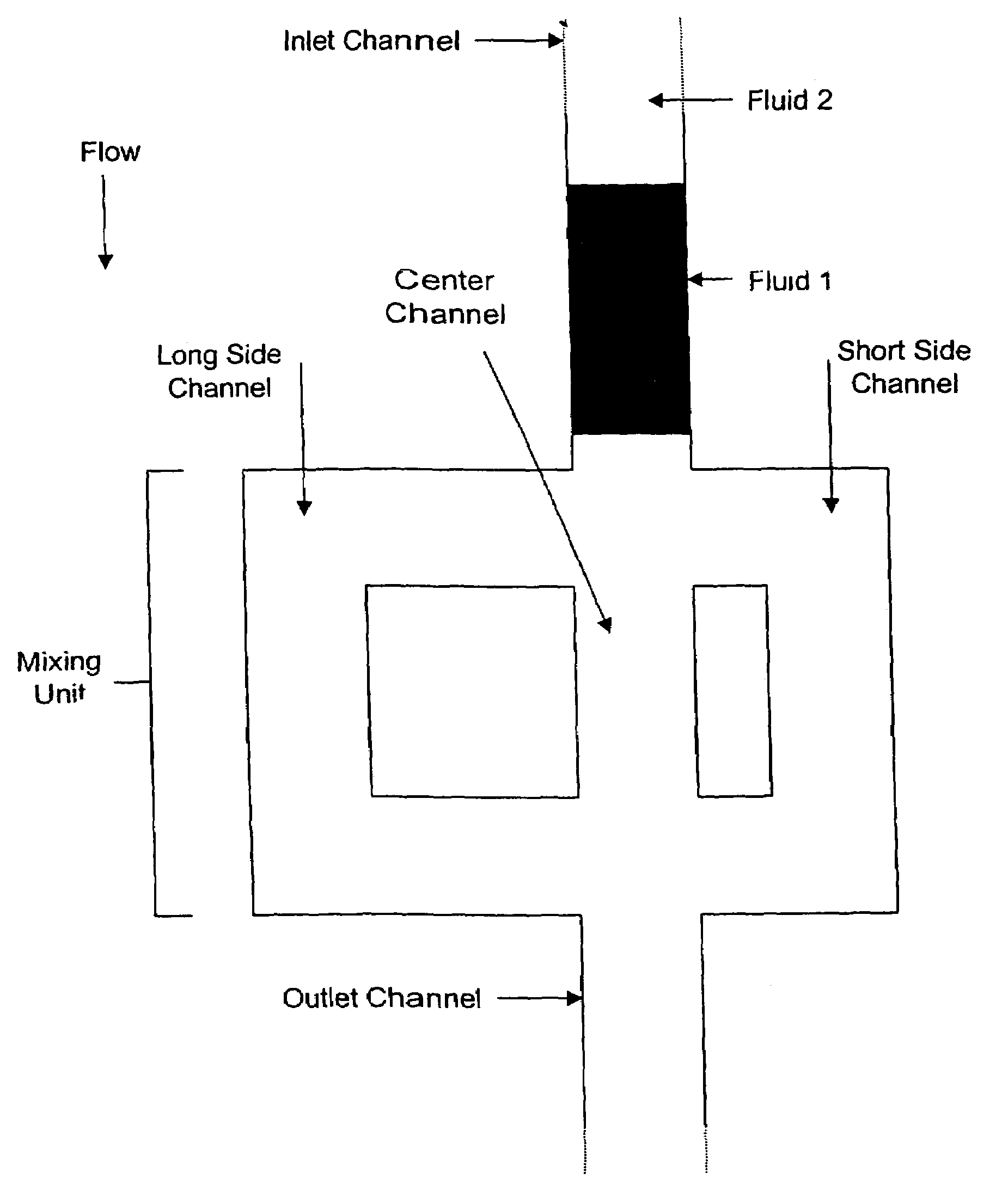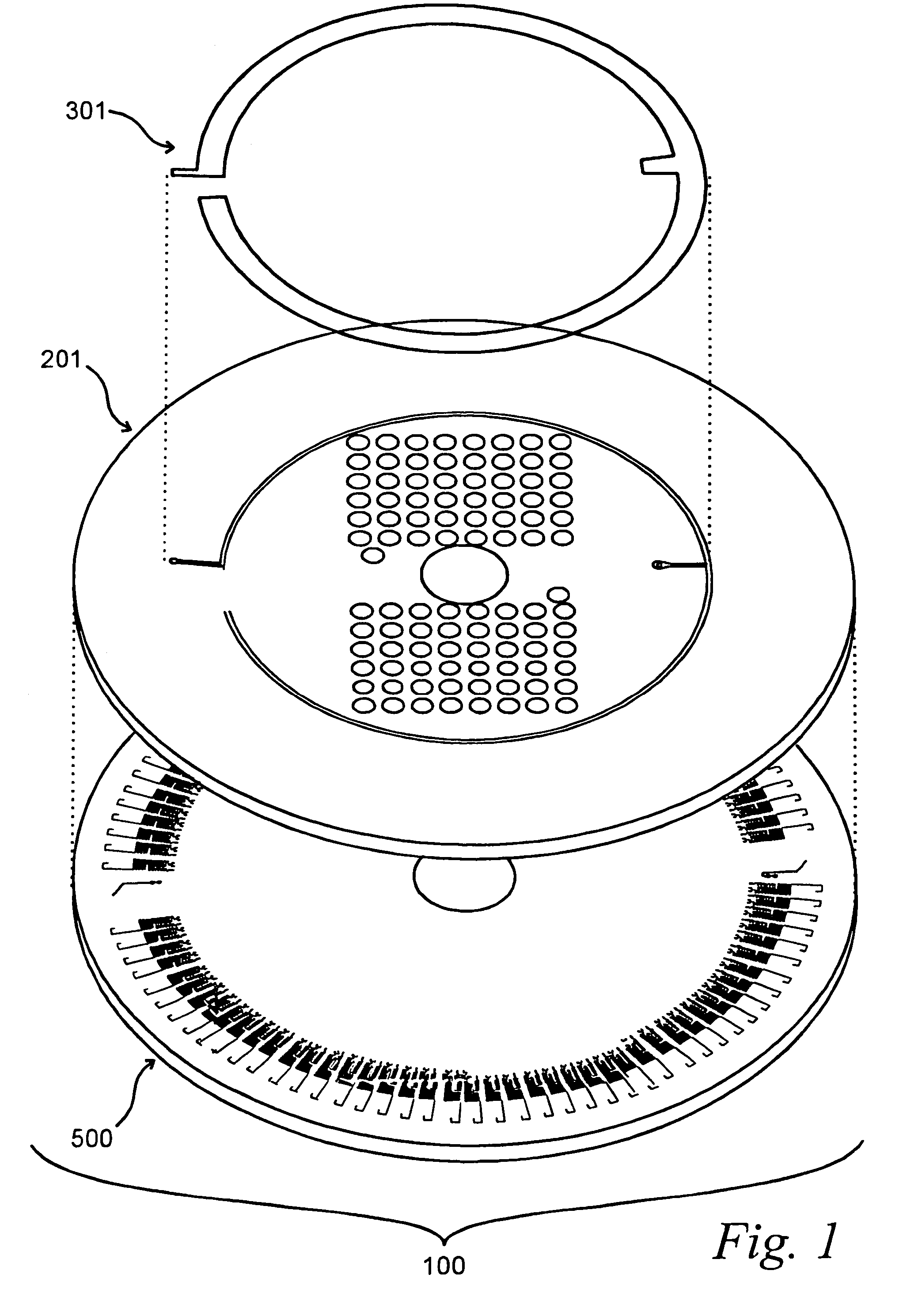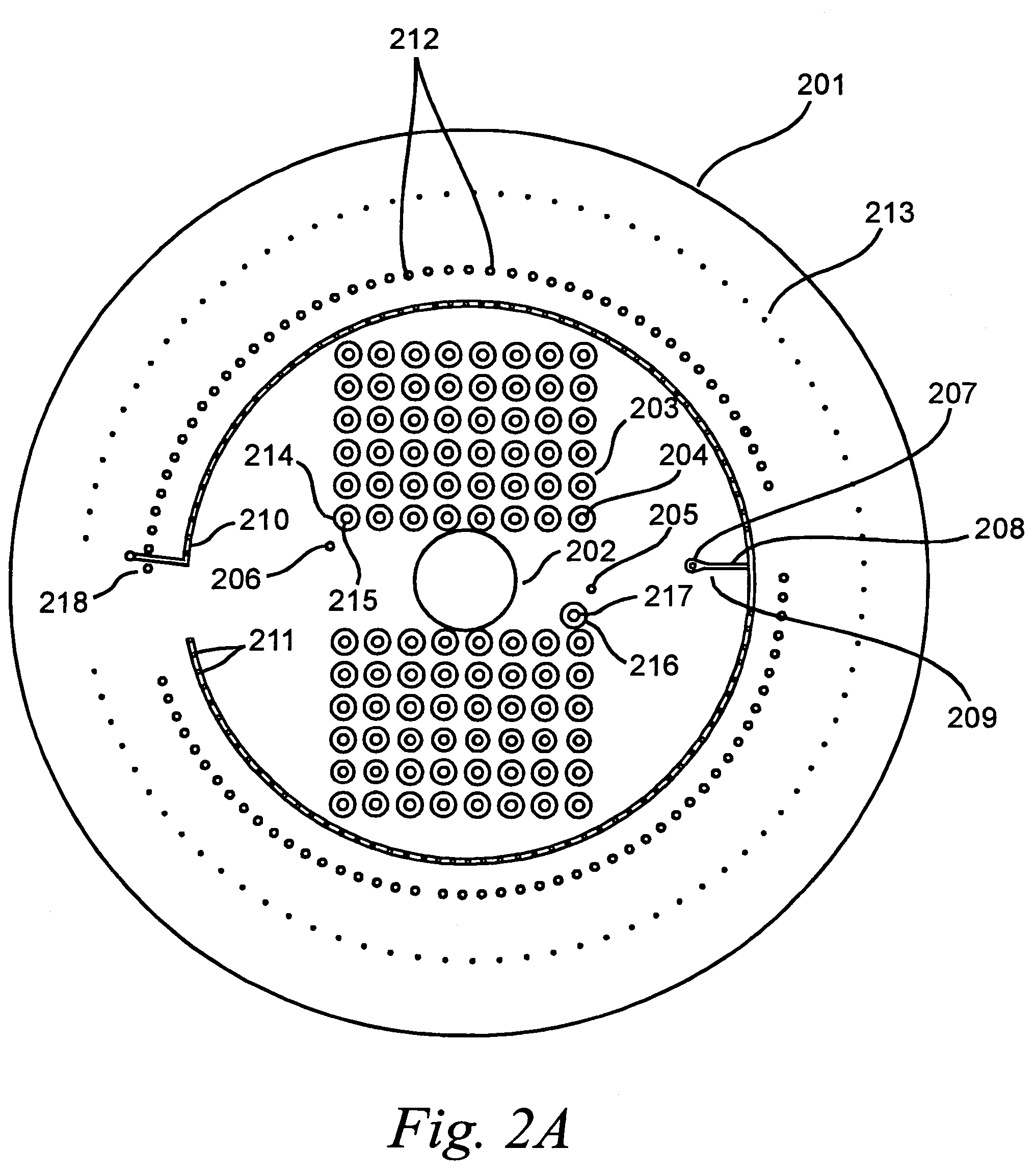Microfluidics devices and methods of diluting samples and reagents
a technology of microfluidics and reagents, applied in the field of microminiaturization of genetic, biochemical and bioanalytic processes, can solve the problems of reducing optical signals, affecting the accuracy of microfluidics results, so as to reduce reduce the reaction time and the amount of biological materials, and eliminate experimental errors. , the effect of reducing the cost of reagents
- Summary
- Abstract
- Description
- Claims
- Application Information
AI Technical Summary
Benefits of technology
Problems solved by technology
Method used
Image
Examples
example 1
Simultaneous Enzyme Inhibition Assays
[0195]A platform depicted in the FIG. 11 was used in this example. The platform of FIG. 11 is functionally identical to that of FIGS. 1-8, the only significant difference being that that of FIG. 11 is designed for the performance of 24 assays, while that of FIGS. 1-8 is designed for the performance of 96 assays.
[0196]The platform was prepared as follows. The microfluidic reservoir layer 201 was manufactured through machining of acrylic using computer / numerical code machining using a Light Machines VMC5000 milling machine running Light Machines “Benchman” software (Light Machines Corporation, Manchester, N.H.).
[0197]The sealing film of as shown in FIG. 3 was made by applying a double-sided tape to a thin sheet of heat-stabilized polyester (mylar). A section of mylar bonded to tape was cut from the combined sheet to the correct shape, leaving one adhesive face of the tape for application to the macrofluidic layer.
[0198]The microfluidics layer was m...
example 2
Dilution Methods
[0225]A microsystem platform as shown in FIG. 17 was used to dilute a fluorescein-containing sample. This test was performed in two stages. First 1 mM fluorescein in DMSO was used to assess the performance of the first stage. Next 20 mM fluorescein in DMSO was used to assess the performance from the 4th dilution to the 9th. The 20 mM fluorescein experiments were necessary to resolve the concentrations at the higher dilution range, which were not detectable using 1 mM fluorescein.
[0226]Meter chamber and intermediate cuvette volumes as well as theoretical dilution ratios for 1st stage dilution structures are shown in Table 1.
[0227]
TABLE I1st Stage characteristics5thNon-1st2nd3rd4thDilution / meteredDilutionDilutionDilutionDilutionReservoirMeter (μl)0.00.63570.21470.06710.02100.0153Meter Dimensions10888 × 200 × 2883926 × 200 × 2611582 × 200 × 1901847 × 127 × 851652 × 127 × 71.5L × W × D (μm)Intermediate (μl)*2.01.36871.79111.93641.98445.1439Theoretical0.03.17 · 10−11.07 ·...
PUM
| Property | Measurement | Unit |
|---|---|---|
| depth | aaaaa | aaaaa |
| volumes | aaaaa | aaaaa |
| volumes | aaaaa | aaaaa |
Abstract
Description
Claims
Application Information
 Login to View More
Login to View More - R&D
- Intellectual Property
- Life Sciences
- Materials
- Tech Scout
- Unparalleled Data Quality
- Higher Quality Content
- 60% Fewer Hallucinations
Browse by: Latest US Patents, China's latest patents, Technical Efficacy Thesaurus, Application Domain, Technology Topic, Popular Technical Reports.
© 2025 PatSnap. All rights reserved.Legal|Privacy policy|Modern Slavery Act Transparency Statement|Sitemap|About US| Contact US: help@patsnap.com



